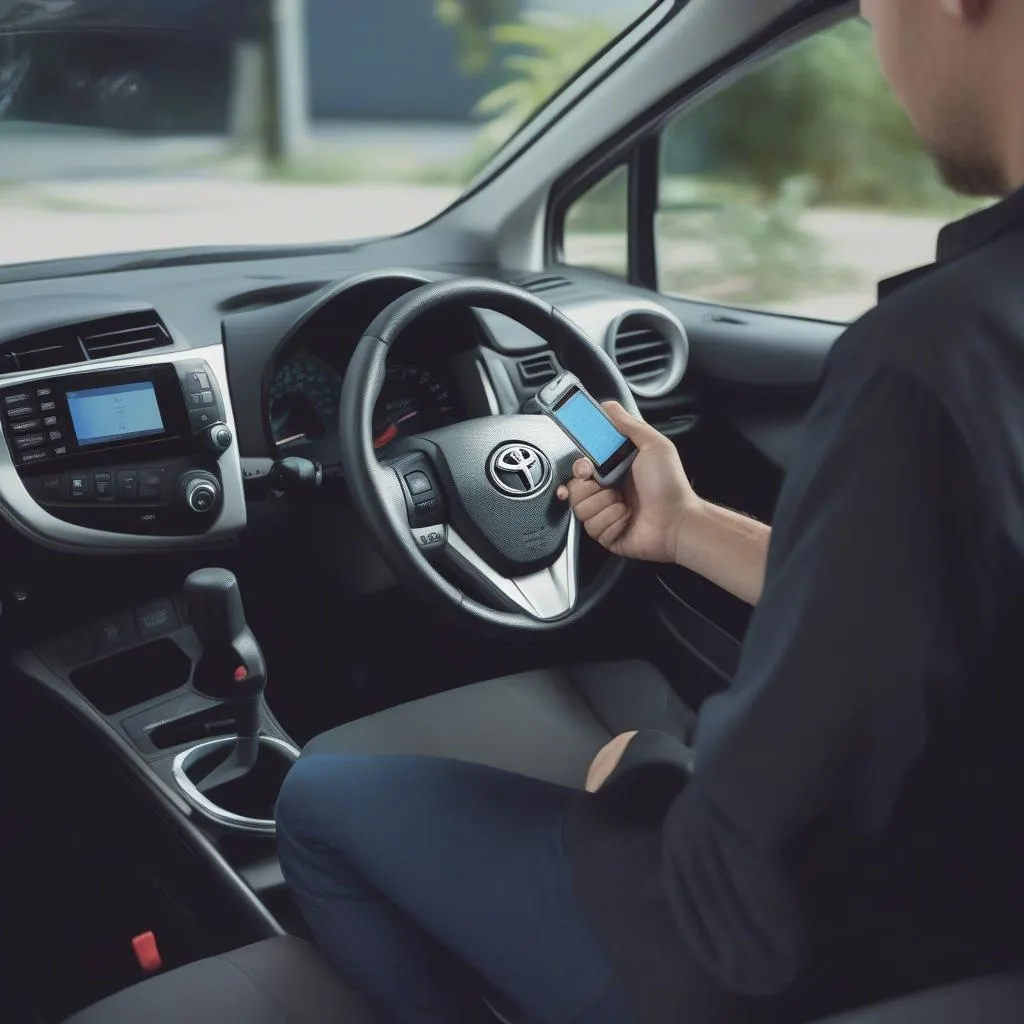A car battery reading 11 volts won’t start your vehicle. This low voltage indicates a significantly discharged or faulty battery, preventing the engine from cranking. Understanding the causes and solutions for this common issue can save you time, money, and frustration. Let’s delve into why your car battery is at 11 volts and how to address it.
Why Your Car Battery is at 11 Volts and Won’t Start
Several factors can contribute to a car battery reading only 11 volts. Identifying the root cause is crucial for effective troubleshooting. A battery at this voltage is significantly discharged and can’t deliver the necessary power to start the engine. If your car lights are on but wont start, the problem may not be solely with the battery.
- Parasitic Drain: Even when your car is off, certain electrical components can continue to draw power, slowly draining the battery. This can include interior lights, faulty door switches, or aftermarket accessories.
- Age: As car batteries age, their ability to hold a charge diminishes. A battery that’s several years old might be nearing the end of its lifespan and struggle to maintain voltage, especially in colder temperatures. There are telltale signs of a faulty car battery that you should be aware of.
- Extreme Temperatures: Both extreme heat and extreme cold can negatively impact battery performance. Heat can accelerate the chemical reactions within the battery, leading to faster discharge. Cold temperatures can thicken the battery’s electrolyte, making it harder to produce the necessary current.
- Alternator Issues: The alternator recharges the battery while the engine is running. A failing alternator won’t replenish the battery’s charge, eventually leading to a low voltage and starting problems.
- Corroded Terminals: Corrosion on the battery terminals can hinder the flow of electricity, preventing the battery from properly charging and discharging. You might need to learn about charging a completely dead battery if the issue is severe.
Troubleshooting a Car Battery at 11 Volts
Here’s a step-by-step guide to diagnose and address the issue:
- Check the Terminals: Inspect the battery terminals for corrosion. If present, clean them with a wire brush and baking soda solution. Ensure tight connections to the battery cables.
- Jump Start: Attempt to jump-start the car. If the car starts, it indicates a discharged battery. However, if it still won’t start, the problem may lie elsewhere, such as the starter motor.
- Test the Battery: After jump-starting, use a multimeter to check the battery voltage. A healthy battery should read around 12.6 volts. If the voltage drops quickly after disconnecting the jumper cables, it confirms a faulty battery. If you charged your car battery and now it wont start, consider other potential issues besides the battery itself.
- Inspect the Alternator: With the engine running, check the battery voltage again. A functioning alternator should maintain a voltage between 13.5 and 14.5 volts. A lower reading suggests a potential alternator problem.
Solutions for an 11 Volt Car Battery
- Recharge the Battery: If the battery is simply discharged, recharge it using a battery charger.
- Replace the Battery: If the battery is old or faulty, replacement is the best option. Consider upgrading to a higher-capacity battery if your vehicle has significant electrical demands.
- Repair or Replace the Alternator: If the alternator is faulty, have it repaired or replaced by a qualified mechanic.
- Address Parasitic Drain: Identify and eliminate any parasitic drains by checking fuses, relays, and electrical components. A bad battery check engine light can sometimes indicate a parasitic drain.
 A mechanic using a multimeter to test a car battery.
A mechanic using a multimeter to test a car battery.
“Regular battery maintenance is key to avoiding starting problems,” says automotive expert John Smith, ASE Certified Master Technician. “Checking and cleaning terminals, monitoring the voltage, and replacing the battery every few years can save you from unexpected breakdowns.”
Conclusion
A car battery reading 11 volts indicates a serious issue that requires immediate attention. By following the troubleshooting steps and implementing the solutions outlined above, you can effectively address the problem and get your car back on the road. Remember that proactive maintenance, including regular battery checks, can prevent many starting problems related to a low-voltage battery like “car battery 11 volts wont start”.
FAQ
-
How long does it take to recharge a car battery at 11 volts? It can take several hours to fully recharge a deeply discharged battery.
-
Can I drive with an 11-volt battery? It’s highly unlikely you can drive with an 11-volt battery as it won’t have enough power to start the engine.
-
Is it safe to jump-start an 11-volt battery? Yes, it’s generally safe to jump-start, but ensure proper procedures are followed to avoid any hazards.
-
How often should I replace my car battery? Most car batteries last between three and five years.
-
Can a bad alternator cause an 11-volt battery reading? Yes, a faulty alternator can prevent the battery from recharging, leading to a low voltage.
-
What other problems can a low-voltage battery cause? A low-voltage battery can cause dimming headlights, slow cranking, and issues with electronic systems.
-
How can I prevent my car battery from discharging? Regularly check for parasitic drains, ensure proper alternator function, and avoid leaving accessories on when the engine is off.

